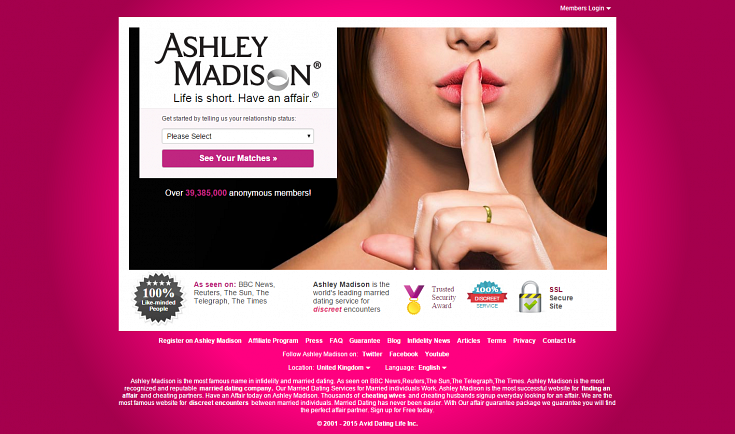What can cheaters and Amholes teach us about good UX?
24 August 2015 - Jessica Cameron

Over the past few days, we have seen extensive media coverage of scandals involving two websites: Ashley Madison and Amazon.
The Ashley Madison website offered users the opportunity to discreetly set up marital affairs online, which seemed to be working out okay until hackers obtained details from 33 million accounts and made them public.(this will open in a new window)

Then there’s Amazon, a company feted and renowned for top-notch treatment of its customers, was revealed to not treat its employees terribly well(this will open in a new window)(again) . This latest expose stirred up the moral outrage of people who really like getting personalised product recommendations and not paying for shipping.
The UX lesson to be learned from the Ashley Madison affair (pun intended) is simple, while Amazon offers a more complex takeaway.
Always safeguard your users’ data
Trust is paramount online, especially when you ask users to enter personal or financial information. And it doesn’t get much more personal than paying to have an extramarital affair. Users who sign up for such a service expect that their information will remain private, and justifiably feel betrayed when it turns out that it is not.
To make matters even worse, a number of news accounts of the Ashley Madison hack have highlighted the experiences of users who used the service’s “full delete” option, paying £15 to have their names and email addresses removed from the site’s database, only to find that some of their other identifying details(this will open in a new window) were included in the data dump. Surprise!
The simple lesson to be learned? Make your website secure. Assure your users that their personal information will always be secure. And then keep your promises.
Good CX does not require good EX
Common wisdom is that happy employees make for happy customers – in other words, that a good employee experience is a key part of a good customer experience. But while Amazon routinely comes out on top of customer surveys about the online experience, the company has a median employee tenure of just one year. It seems these two principles do not always go hand in hand.
So what makes customers happy? Paying attention to what they need, and giving it to them. In fact, Amazon founder and chief executive Jeff Bezos’ first leadership principle is Customer Obsession.
“Leaders start with the customer and work backwards. They work vigorously to earn and keep customer trust. Although leaders pay attention to competitors, they obsess over customers.”
(As a side note, if I had 5p for every participant in a user testing session who told me that she wished a feature of a website was more like it is on Amazon… well, I’d have a lot of change. It’s qualitative research, okay? I couldn’t retire, but I could buy a really big cup of coffee.)
The lesson here is not to make your employees miserable, but rather to remember that a positive user experience comes primarily from understanding what users need. What employees want to see on a website – and that includes the CEO – matters far less than what the site’s users need to see.
For better or for worse, that insight is ultimately worth far more than free food or even reasonable expectations of employees returning from extended medical leave.
What the future holds
I don’t need a crystal ball to predict that few will ever trust Ashley Madison with their personal information again. On the other hand, the convenience of shopping with Amazon will likely trump most people’s disappointment with the company’s management practices. A good user experience will carry a company through nearly every time.
You might also be interested in...
Bridging Business Analysis and User Experience: Achieve Outstanding Digital Results
24 November 2025Discover how aligning Business Analysis and User Experience transforms digital projects - boosting efficiency, user satisfaction, and ROI for organisations seeking exceptional results in today’s competitive market.
Read the article: Bridging Business Analysis and User Experience: Achieve Outstanding Digital ResultsMaking Hospitality Welcoming for All: A Digital Accessibility Guide for Hotels
21 November 2025Hotels have long focused on physical accessibility, but true inclusion extends online. This practical guide explains how to make your hotel website accessible for all guests—meeting global WCAG and EAA standards, expanding your reach, and creating a seamless booking experience for every visitor.
Read the article: Making Hospitality Welcoming for All: A Digital Accessibility Guide for HotelsUsing the Kano Model to Drive Product Success
14 October 2025The Kano Model helps product teams understand what drives customer satisfaction. Features are grouped as Mandatory, Satisfier, Delighter, Indifferent, or Rejectors - each affecting the user experience in different ways. By balancing these feature types, teams can make smarter decisions, avoid clutter, and build products that truly delight users.
Read the article: Using the Kano Model to Drive Product Success